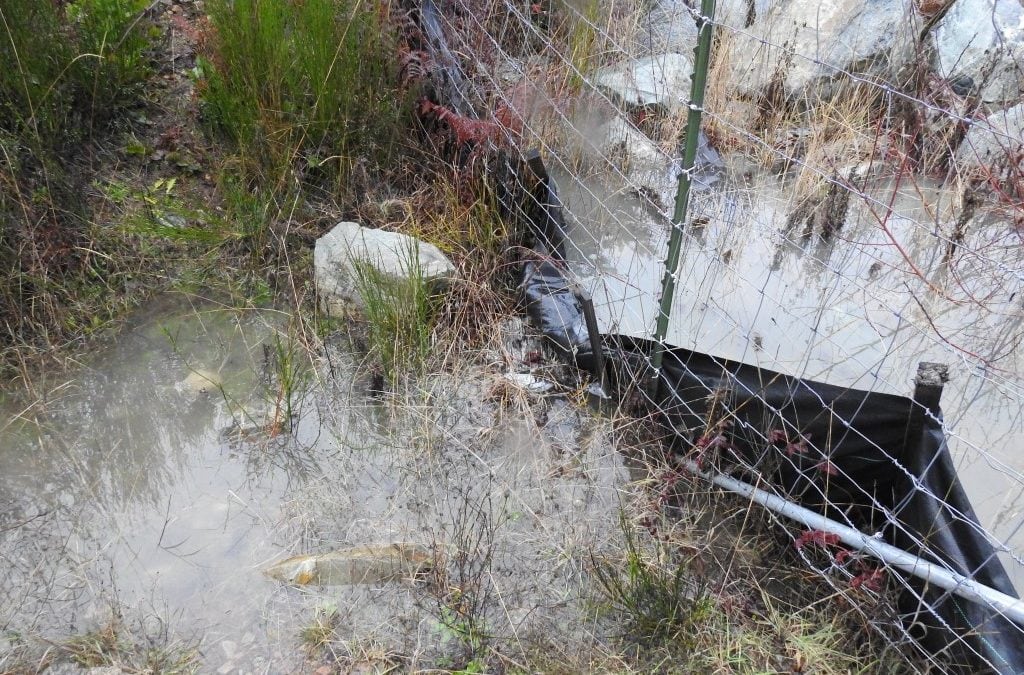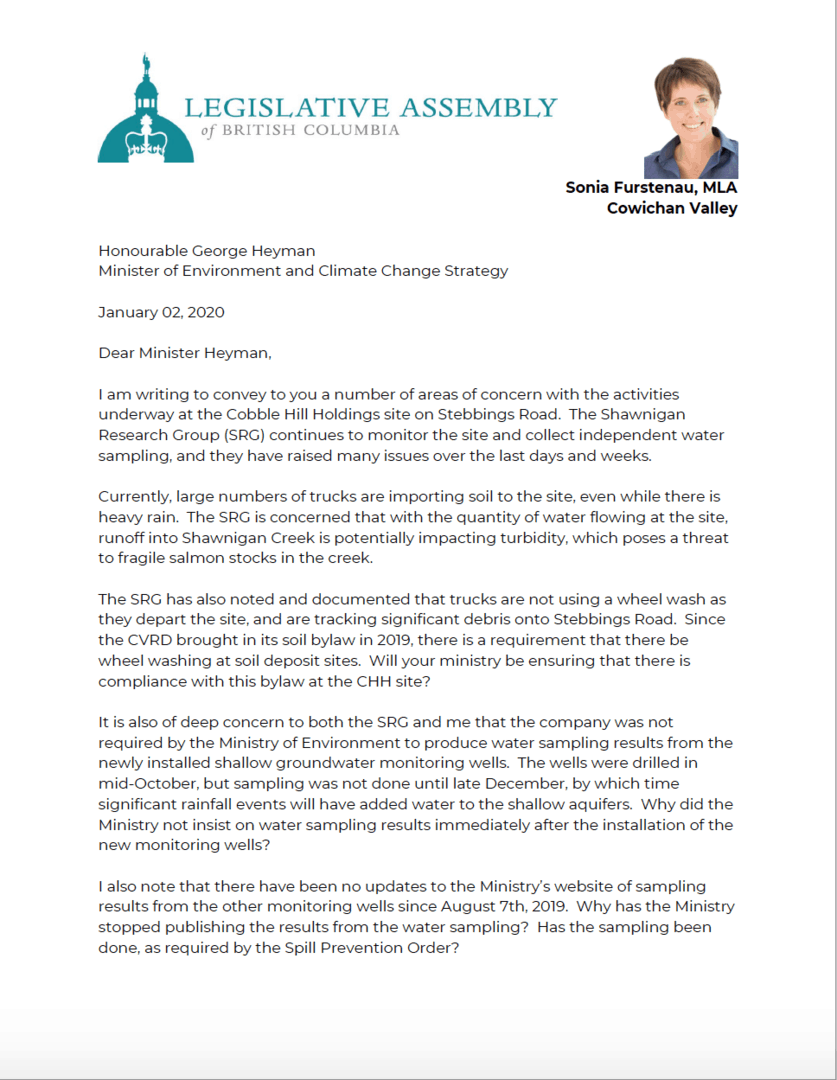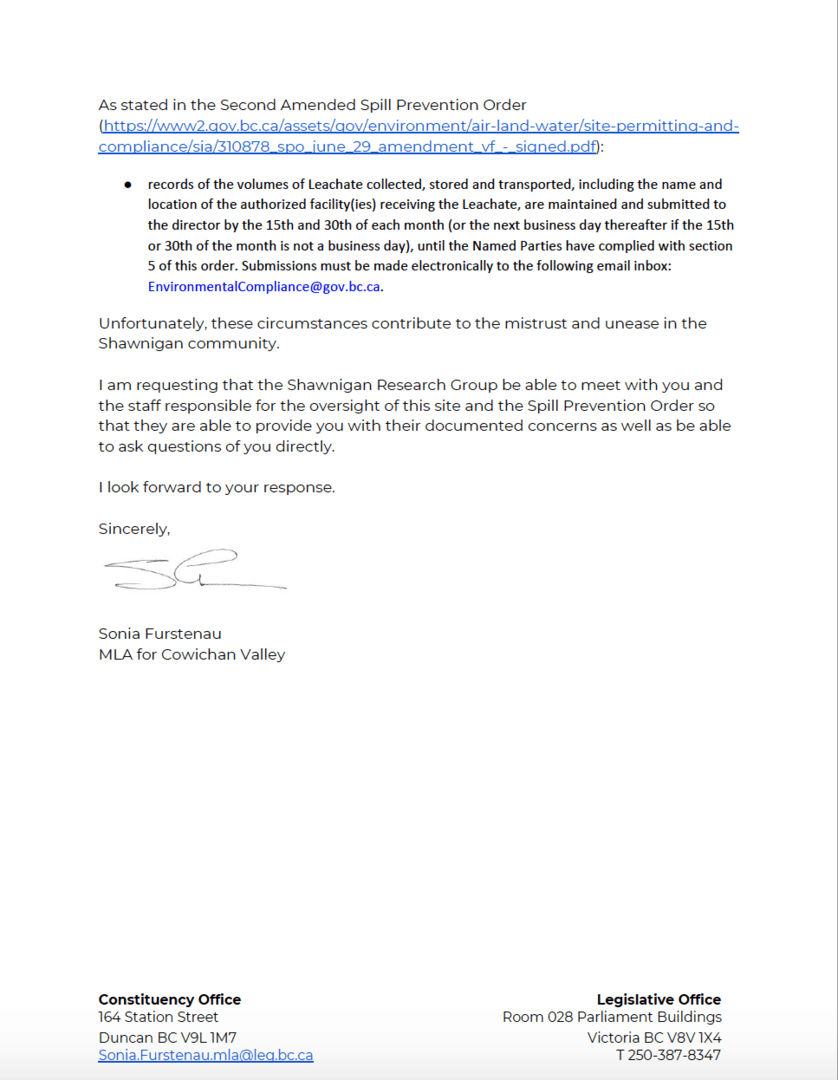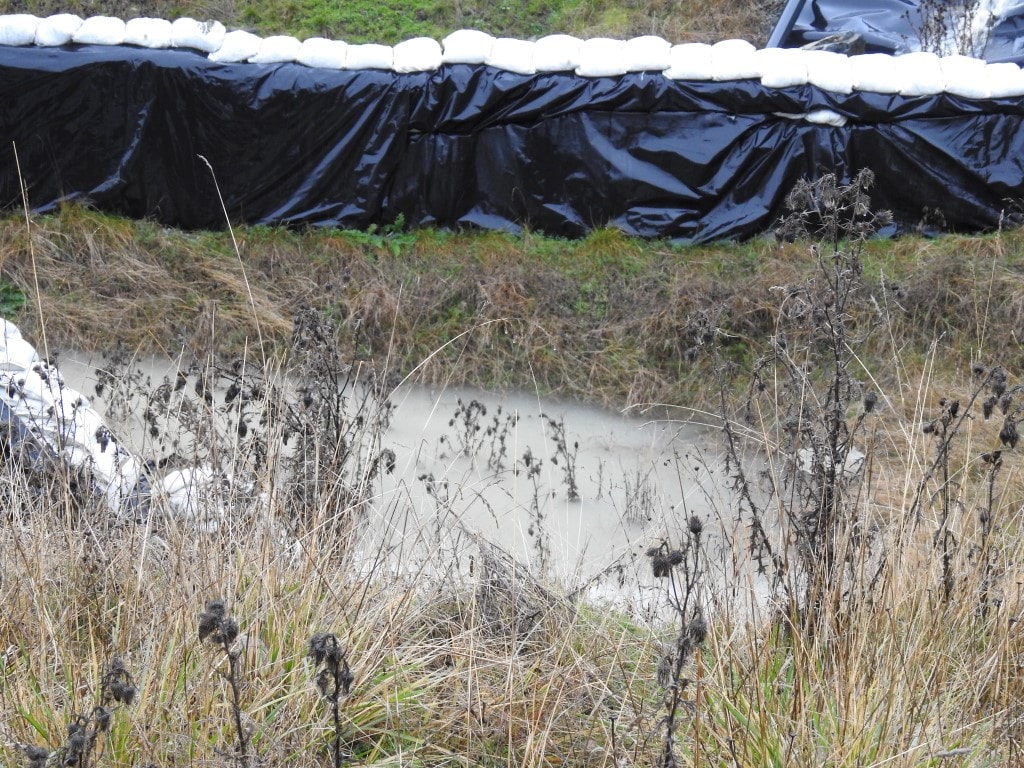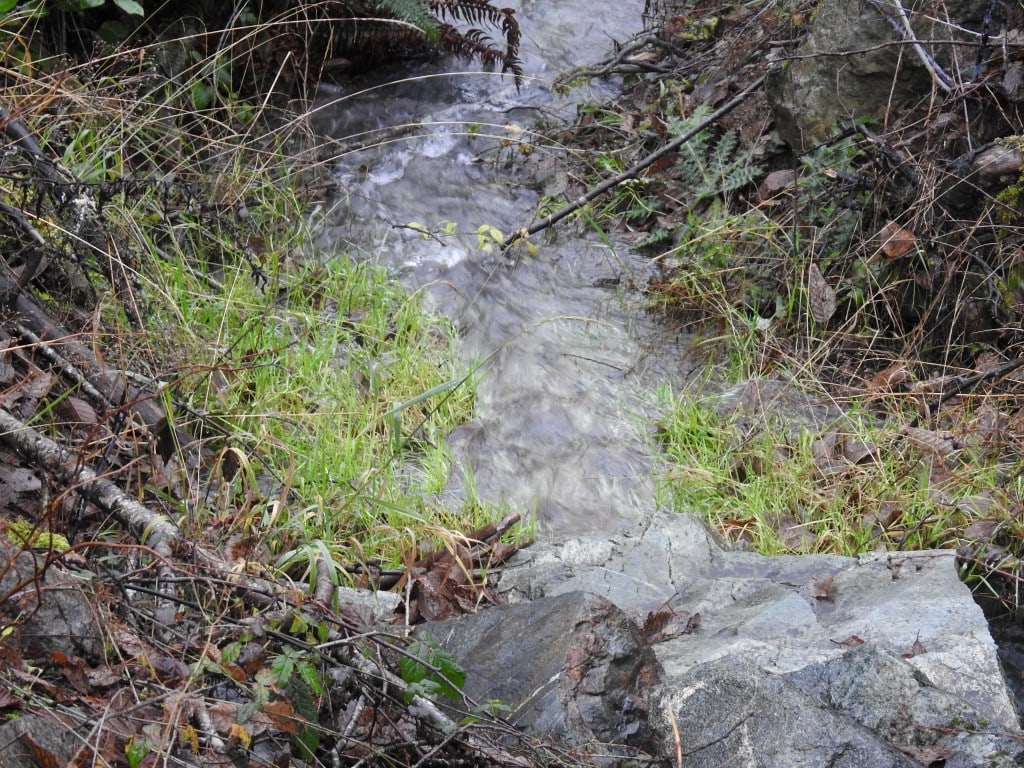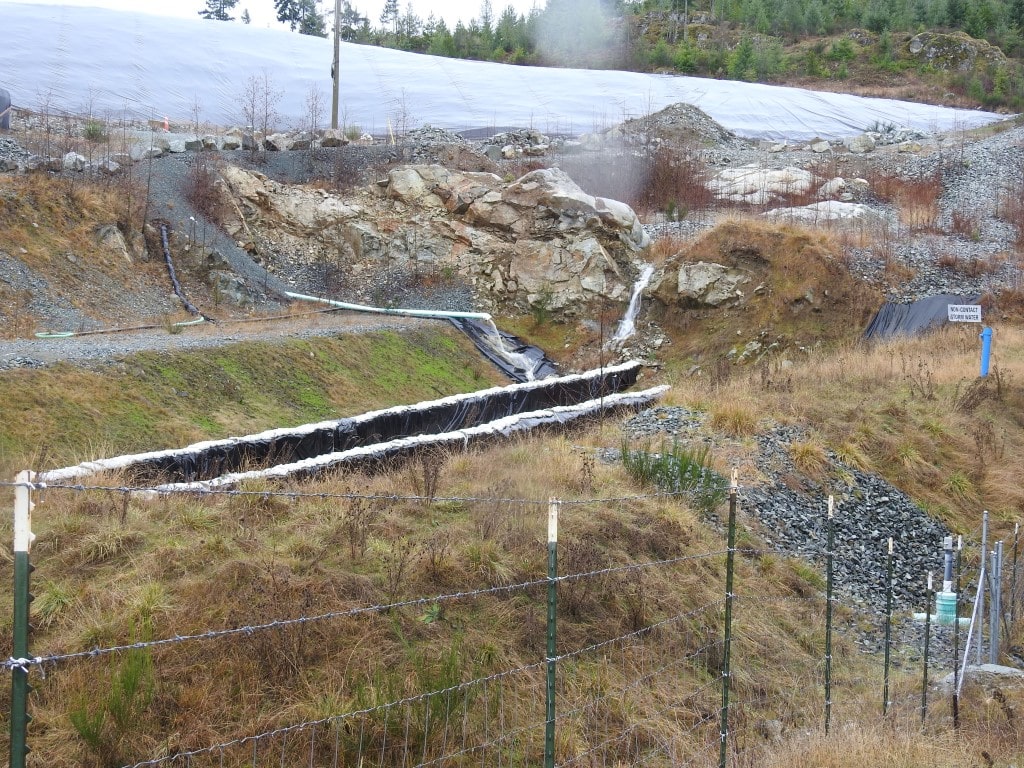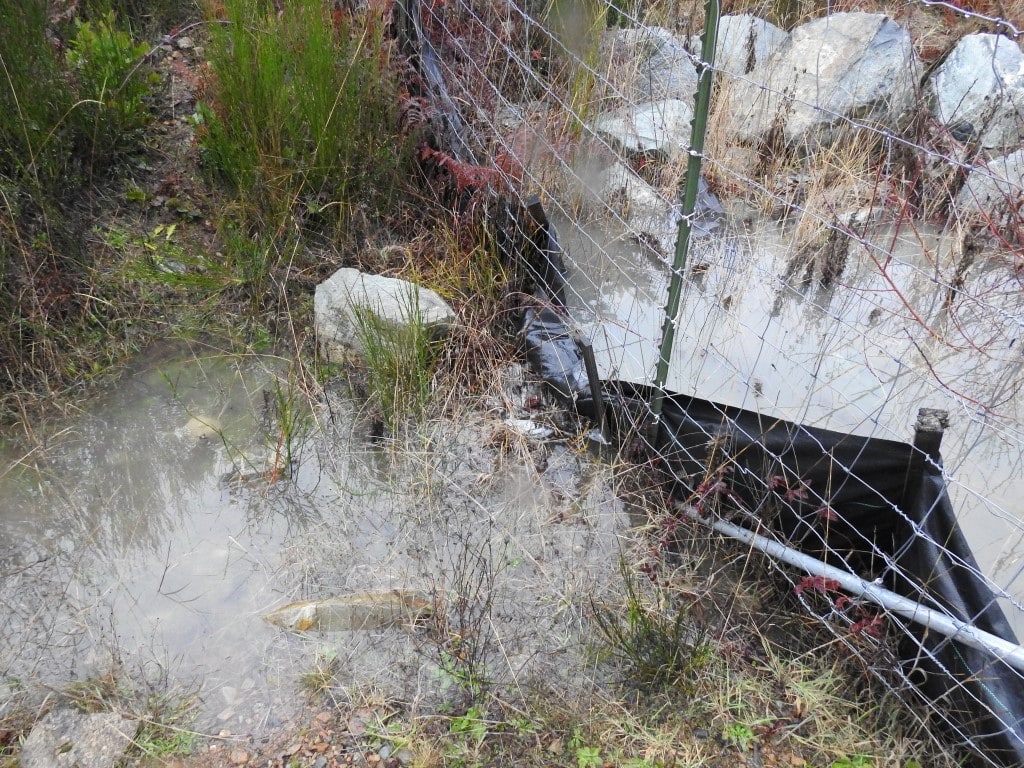When the former Minister of Environment revoked the permit for the contaminated landfill in Shawnigan Lake, our community rejoiced. We had stood up for the future we wanted, and we had been successful in getting the outcome we’d fought for over the course of several years.
However after more than over two years of engaging with the new government on this file, I have some significant concerns about the path we are on.
On January 2nd of this year, I sent a letter to Minister Heyman raising several concerns about the activity at the Cobble Hill Holdings landfill site in Shawnigan Lake, where trucks were beginning to import the capping soil, as per the closure plan that the Minister had approved in July. I had specific questions for the Minister:
- Why had the company not been required to obtain and produce water sampling results from the shallow groundwater monitoring wells that had been installed in October?
- Why has the ministry stopped publishing water sampling results from the site?
- Will the Minister agree to meet with the Shawnigan Research Group to discuss the concerns they are raising?
As of this morning, I had no response from the Minister or his staff. I have followed up with the Minister’s office.
When people ask me why I ran for MLA, I give them a very brief summary of what happened in Shawnigan. And then I point out that what I recognized was that professional reliance was at the root of much of what had resulted in a permit for a contaminated landfill being granted inside a community’s drinking watershed.
Once I was elected, I put a great deal of focus on the work to reform professional reliance, which I have written and spoken about in the Legislature at second reading of the Professional Governance Act. I am pleased that the Superintendent of Professional Governance is now underway in his new role.
While there have been systemic changes, there remains much work to be done. I am deeply disappointed with the decisions the government has chosen to take in relation to the soil that remains on the closed landfill in Shawnigan.
Immediately after the 2017 election, I worked in good faith with the Minister of Environment and his staff in the hope that they would recognize that the responsible action would be to order the soil removed from the site.
As I detailed nearly a year ago:
“In the nearly two years since I was elected MLA, and in addition to my work on systemic issues like professional reliance, I have continued to be relentless in my efforts to advocate for Shawnigan and its watershed. I have worked closely with the Shawnigan Research Group, and attended several of their meetings with Ministry of Environment staff, including a four-hour meeting last week, on April 16th. I have discussed the matter at length with the Minister of Environment, with the Deputy Minister, and with ministry staff – reiterating each time that our efforts in Shawnigan were always rooted in evidence and reason, and that literally the foundations of the permit and the landfill will never be trusted by our community.”
Since then, this government has made a series of decisions that have, in my opinion, disregarded not only evidence, but have been the opposite of what they had stated in the past.
In my exchange with Premier Horgan in May 2019, I asked him directly about statements that he had made concerning Shawnigan while in opposition. He responded:
I get contacted from my friends regularly about their concerns. And I have to confess that I’ve been saying for six or seven years: “Don’t worry. The right thing will always happen.” Well, that was in opposition. Now I find myself the leader of the government. I’m very much hopeful that the right thing will happen, but that will take some time, and the decision, of course, is not in my hands; it’s in the hands of the Minister of Environment. But I know the member is passionate about this, as are the people of Shawnigan Lake, and I’m hopeful that resolution will be available soon and that all parties will have a way forward.
I also raised this issue in Question Period several times last year:
- May 14, 2019 – Question Period: Soil in Shawnigan Lake
- May 15, 2019 – Question Period: Closure plan for soil disposal site in Shawnigan Lake Watershed
- May 16, 2019 – Question Period: NDP support for Shawnigan Lake Watershed
- October 8, 2019 – Question Period: Shawnigan Soil Removal
- October 9, 2019 – Question Period: Shawnigan Soil Dump Closure Plan
- October 31, 2019 – Question Period: Soil Disposal Site in Shawnigan Lake Watershed
In my October 31st question, I summarized where things were at:
Conditions have not been met. Deadlines have not been met. The consultants who made the closure plans sued the landfill owners and put builders’ liens against the property. Property taxes have not been paid, and the possibility of forfeiture to the Crown looms in one short month from now. [Note: the company did not pay its taxes, and forfeiture process has since begun.]
There’s another new twist. In their most recent detailed construction plan, the company proposes to first import capping soil to this site, which would be stockpiled until all of the other closure plan activities have been completed. This, of course, overlooks the fact that there are well over 100,000 tonnes of soil sitting a few hundred metres away on the adjacent lot owned by the same people — soil that they were ordered to remove by the Minister of Energy, Mines and Petroleum Resources and an order that was ignored. What a tangled web.
My question is to the Minister of Environment and Climate Change Strategy. Does the minister intend to allow this company to import and stockpile soil to sit unused in piles on this site during the winter rains, leeching sediment into the watershed?
The Minister’s response?
We are currently in the process of reviewing the work as well as taking steps to ensure that the site will be secure and water will be protected throughout this fall.
The Shawnigan Research Group continues to monitor the site. The water management has been an issue at this site from the very beginning; there is a great deal of active surface water, in addition to the ground water below the site. From the Research Group’s observations and photographs, as well as the tests they have been doing on the turbidity of the water in the stream that leaves this site, it is difficult to take any comfort in the Minister’s words.
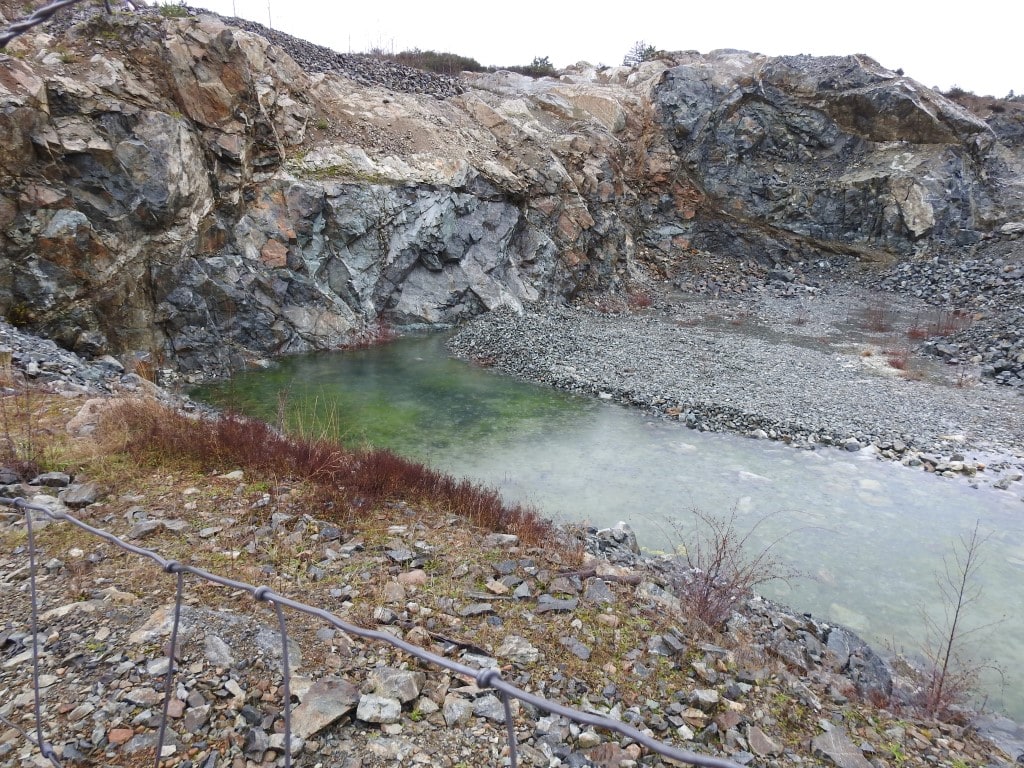
The water in the settling pond was dirty. There was no water exiting the settling pond exit pipe but we could hear the water running straight through the settling pond berm and into the ephemeral stream.
When the Minister of Environment agreed to the company’s closure plan, despite all of the evidence brought forward by the Shawnigan Research Group, I considered the bigger picture, and how watershed protection around BC does not seem to be a priority for this government.
Priorities, I reflected, inform outcomes:
If protection of Shawnigan’s drinking water were a priority, this Minister would have ordered the soil removed.
If protection of drinking watersheds across BC were a priority, the people of Peachland would not have to be looking at paying $24 million for a water treatment plant because of impacts from logging in their watershed. The people of Ymir would not have to be fighting so hard to prevent BC Timber Sales from moving forward with logging in their drinking watershed. The citizens of Campbell River would not be having to worry about a contaminated landfill in their drinking watershed.
The Mt Polley disaster and its aftermath is another example of what happens when protecting water is not a priority – five years after the tailings pond breached at Mt Polley effluent from the mine is still being pumped into what was once a pristine body of water.
The list goes on, in every part of BC, communities are experiencing negative impacts to their drinking water due to prioritizing fracking, mining, logging, and other industrial activities over safe drinking water.
With increasing droughts and other impacts from climate change, drinking water protection and water security must be a top priority of all governments
This Minister’s decision to accept this closure plan is deeply disappointing. I will continue to work with the Shawnigan Research Group and the community as we contemplate next steps. This is neither an appropriate nor an acceptable direction.
And I will continue to work to make protection of drinking water in this province a priority. Every community in BC should expect no less.

